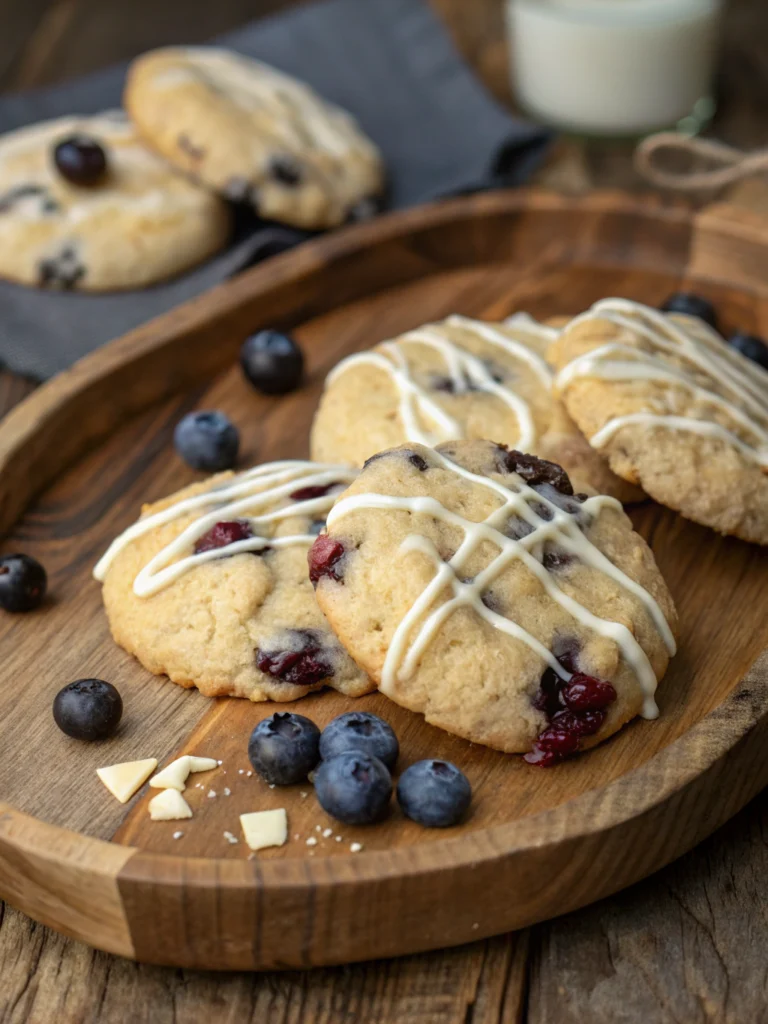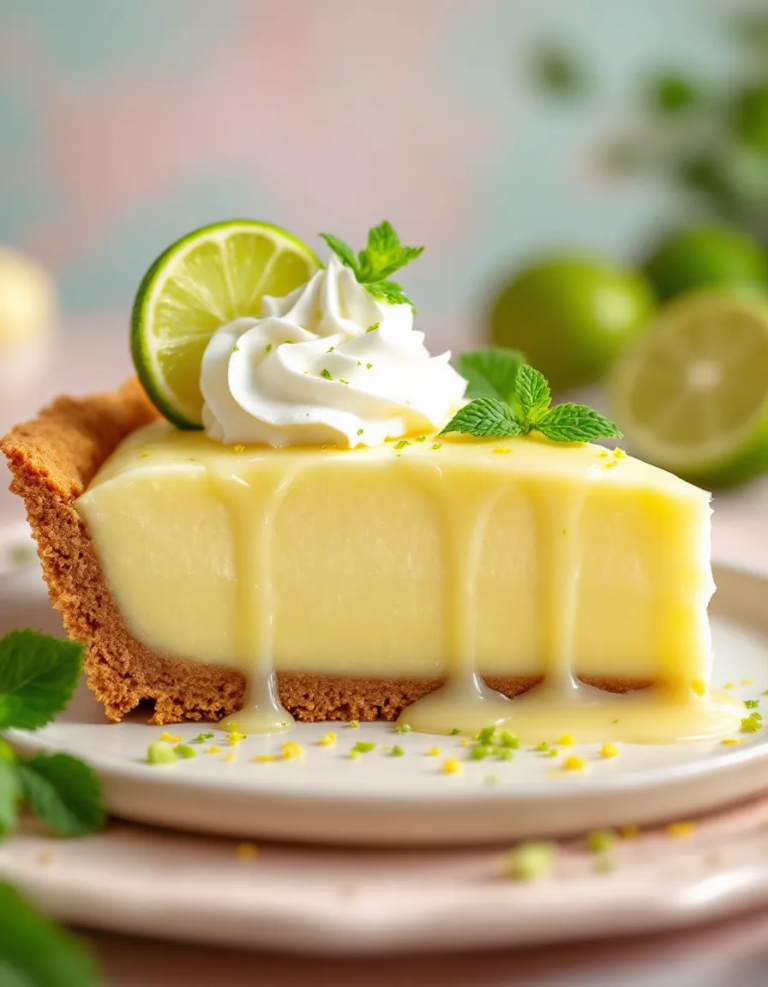Easy Pineapple Coconut Dream Cake – Ready in 30 Minutes
Pineapple Coconut Dream Cake: A Tropical Delight
Indulge in the irresistible flavors of our Pineapple Coconut Dream Cake! This delightful cake transports you to a tropical paradise with every bite, featuring a luscious blend of sweet pineapples and creamy coconut. The moist texture of the cake, combined with a rich coconut cream frosting, creates a heavenly experience that is simply unforgettable. Whether it’s a summer gathering, a birthday celebration, or just a sweet treat to brighten your day, this cake promises to be the star of the show.
As you prepare to bake, the tantalizing aroma of coconut wafting through your kitchen will evoke feelings of warmth and joy. Each layer is infused with fresh pineapple chunks, enhancing the cake’s sweetness and adding a refreshing twist. Perfectly paired with a glass of iced tea or fruity punch, the Pineapple Coconut Dream Cake is not just a dessert; it’s an experience filled with tropical bliss.
Quick Recipe Highlights
- Flavor Profile: The cake boasts a sweet and tangy flavor from fresh pineapple, balanced by the creamy richness of coconut.
- Texture: Each slice delivers a light and moist texture that melts in your mouth, while the frosting adds a creamy smoothness.
- Aroma: The combination of coconut and pineapple creates an inviting tropical aroma that will fill your kitchen.
- Visual Appeal: Layers of golden cake are beautifully complemented by a fluffy white frosting, often garnished with toasted coconut or fresh fruit.
- Skill Level Needed: This recipe requires intermediate baking skills, perfect for those looking to take their baking to the next level.
- Special Equipment: A round cake pan, electric mixer, and a spatula will make your baking process smoother and more efficient.
Recipe Overview
- Difficulty Level: The Pineapple Coconut Dream Cake requires an intermediate skill level due to its layering and frosting techniques, but it’s a rewarding challenge for any home baker.
- Category: This is a dessert recipe, perfect for any occasion, be it a casual family dinner or a festive celebration.
- Cuisine: Rooted in tropical flavors, this cake draws inspiration from Hawaiian and Caribbean culinary traditions, celebrating fresh fruits and coconut.
- Cost: With common ingredients like flour, sugar, butter, and fruit, the estimated cost is around $15-20, making it an affordable yet impressive dessert.
- Season: Enjoy this cake year-round, but it shines brightest during summer months when pineapples are in season, enhancing its freshness.
- Occasion: Ideal for birthday parties, potlucks, or summer barbecues, this cake brings a festive spirit to any gathering.
Why You’ll Love This Recipe
The Pineapple Coconut Dream Cake is a crowd-pleaser, delivering a delightful mix of flavors and textures that elevate any dessert table. The sweet and tangy pineapple coupled with the rich coconut creates a flavor experience that is both refreshing and indulgent. Each bite introduces layers of moist cake and smooth frosting, providing a satisfying mouthfeel that will leave guests reaching for seconds.
Convenience plays a key role in this recipe’s appeal. The ingredients are straightforward and highly accessible, ensuring that even novice bakers can whip it up with relative ease. The cake can be prepared in advance, allowing you to savor the moment with friends and family instead of stressing over last-minute baking.
Packed with nutrients from fresh pineapple and coconut, this cake offers some surprising health benefits amidst its indulgence. Pineapples are rich in vitamins and bromelain, which aids digestion, while coconut provides healthy fats and fiber. Thus, you can enjoy this dessert without feeling too guilty!
This cake serves as a delightful centerpiece for any gathering. Its vibrant colors and enticing aroma draw people in, making it perfect for sharing. It encourages conversation and connection, creating lasting memories tied to the shared experience of enjoying delicious food.
Cost-effective and accessible, the Pineapple Coconut Dream Cake allows you to impress guests without breaking the bank. With a modest ingredient list, you can create a stunning dessert that highlights the beauty of fresh fruit and simple preparation techniques.
Historical Background and Cultural Significance
The origins of pineapple and coconut desserts can be traced back centuries, with coconuts being a staple in tropical regions where they thrive. Traditional coconut cakes are popular in many cultures, often associated with celebrations. Pineapple, known as the “king of fruits,” has also played a significant role in various cuisines around the world. Together, they echo the rich culinary landscapes of Hawaii and the Caribbean.
In Hawaiian culture, pineapple holds particular significance, often symbolizing hospitality and welcoming. Historically, the fruit was also vital for trade and agriculture, tying it closely to the island’s economy and identity. Coconut, revered for its versatility, was used in everything from food to traditional crafts, further emphasizing its cultural importance.
Over the years, the recipe for pineapple coconut cakes has evolved, adapting to local flavors and available ingredients. Today, variations abound, with bakers creatively interpreting traditional recipes to suit modern tastes. From layered cakes to cupcakes, the introduction of different frostings and fillings showcases the endless possibilities these two tropical ingredients offer.
Regional variations of this cake can be found across tropical locales, each bringing unique twists. For instance, a common adaptation includes the introduction of macadamia nuts or passion fruit, enhancing both flavor and texture. This adaptability has solidified the cake’s place in many households as a beloved treat enjoyed during special occasions.
Ingredient Deep Dive
Pineapple
Pineapple is a tropical fruit known for its sweet and tangy flavor, originating in South America. It holds cultural significance in many tropical regions, often associated with hospitality and celebration. Nutritionally, pineapple is rich in vitamin C and bromelain—a digestive enzyme that offers numerous health benefits. When selecting pineapples, look for a firm exterior and a sweet aroma near the base. Store your fresh pineapple in the refrigerator for up to a week or slice and freeze for later use.
Coconut
Coconut is another tropical treasure, celebrated for its versatility across cuisines. Originating from Southeast Asia, its significance spans culinary, cultural, and economic domains. Coconut meat, milk, and oil are laden with healthy fats, promoting heart health and digestion. When choosing coconuts, opt for those that feel heavy for their size and have a clear “thunk” sound when shaken. Store whole coconuts at room temperature, but once opened, refrigerate the meat or milk for freshness.
Common Mistakes to Avoid
- Not measuring ingredients accurately: Baking is a science, so precise measurements are crucial for achieving the right texture and taste.
- Using canned pineapple instead of fresh: Fresh pineapple enhances flavor and texture significantly, offering a more vibrant taste.
- Overmixing the batter: Overmixing can lead to a dense cake; mix until just combined to keep it light and airy.
- Forgetting to preheat the oven: Skipping this step can result in uneven baking and affect the cake’s rise.
- Skipping the cooling period: Allowing the cake to cool completely before frosting prevents melting and helps maintain structure.
- Applying frosting too early: Wait until the cake is completely cool; warm cake can cause the frosting to melt and slide off.
- Not tasting the frosting: Sampling as you go ensures the right sweetness and flavor balance for the topping.
- Improper storage: Store the cake in an airtight container to retain moisture and freshness.
Essential Techniques
Cake Layering
Layering is fundamental to achieving balance in a multi-layer cake. Properly level each layer using a serrated knife to ensure even stacking. Use a turntable while frosting to maintain a smooth and beautiful finish. Avoid excessive pressure when stacking, as this can disrupt the layers.
Frosting Application
Applying frosting evenly is key for a professional-looking cake. Start with a crumb coat to seal in the crumbs, chill for 30 minutes, then apply a final layer of frosting for a polished finish. Use an offset spatula to create smooth edges and decorative swirls.
Pro Tips for Perfect Pineapple Coconut Dream Cake
1. Ensure all ingredients are at room temperature before mixing for optimal blending and texture.
2. Experiment with different coconut types, such as shredded, sweetened, or desiccated, to change texture and flavor in the frosting.
3. Add vanilla extract to the batter for an extra layer of flavor that complements the tropical ingredients.
4. Toast shredded coconut for garnishing to elevate the visual appeal and texture of the cake.
5. Refrigerate the cake for a while before serving; this can enhance flavors and improve the texture.
6. Consider using a flavored syrup to soak the cake layers before frosting, intensifying the taste.
7. Be mindful of the baking time; check for doneness with a toothpick to prevent overbaking.
8. Decorate the cake with fresh fruit slices or edible flowers for a stunning presentation.
Variations and Adaptations
The Pineapple Coconut Dream Cake can be tailored to suit various preferences. For a lighter version, consider a sponge cake base instead of traditional cake for a lower-calorie option. Seasonal adaptations can include adding ripe mango or passion fruit puree for an exotic twist, enhancing the tropical flavor profile.
If dietary requirements are a concern, gluten-free flour blends can be utilized without compromising texture or flavor. For a vegan adaptation, substitute eggs with flax eggs and use plant-based butter and milk. Experimenting with different types of coconut, such as coconut cream for a richer frosting, can add depth to the recipe.
Texture modifications can be achieved by incorporating nuts or seeds, which add a delightful crunch to each slice. Presentation alternatives might include a layer of tropical-flavored whipped cream or a coconut glaze drizzled over the top for visual appeal.
Serving and Presentation Guide
For an elegant presentation, plate slices on a white or tropical-themed platter to enhance visual contrast. Garnish each slice with toasted coconut flakes, fresh pineapple, or mint leaves for an inviting look. Traditional accompaniments may include a scoop of vanilla ice cream or a dollop of whipped cream, which pairs beautifully with the cake’s tropical flavors.
Modern serving suggestions could involve layering cake layers in mason jars for individual servings, making them ideal for parties or picnics. Pay attention to temperature; serve at room temperature for the best flavor and texture. Portion control can be managed by cutting smaller slices, allowing guests to enjoy the cake without overindulgence.
Wine and Beverage Pairing
Pair this delightful cake with chilled sparkling wine, which complements its sweetness without overpowering it. A fruity Riesling or a light Moscato can enhance the tropical flavors, creating a harmonious experience for the palate. For non-alcoholic options, consider serving with iced tea infused with citrus or a tropical fruit punch.
If coffee is preferred, a light roast coffee can balance the sweetness of the cake beautifully. Temperature is key; ensure all beverages are served chilled, and consider offering them in festive glassware to elevate the overall dining experience.
Storage and Shelf Life
To keep the Pineapple Coconut Dream Cake fresh, store it in an airtight container at room temperature for 1-2 days. If storing longer, refrigerate to maintain moisture and prevent spoilage. By covering it with plastic wrap or aluminum foil, you can help retain its delicious flavors.
Signs of spoilage include discoloration or an off-putting odor. Reheating is simple; warm slices in the microwave for 10-15 seconds to soften them before serving. If you’d like to freeze, wrap entire layers or pieces in plastic wrap and then foil, ensuring they’re placed in a freezer-safe container. The cake can be frozen for up to three months.
Make Ahead Strategies
Baking the Pineapple Coconut Dream Cake in advance can save time and effort. Start by preparing and baking the layers 1-2 days ahead, allowing them to cool completely before wrapping and refrigerating. The frosting can also be made in advance and stored separated in the refrigerator.
When assembling the cake, consider frosting and decorating it the day before your event for better flavor integration. Allow any additional toppings, like fresh fruits, to be added just before serving to ensure they remain vibrant and appealing.
Quality impact assessment shows that chilling the cake overnight allows flavors to meld, enhancing the overall taste. When planning your timeline, try to incorporate at least a few hours between baking and serving for the best results.
Scaling Instructions
Scaling this recipe is straightforward. For halving the recipe, simply reduce each ingredient proportionally while adjusting baking time as needed for smaller layers. When doubling or tripling the recipe, consider using larger cake pans and increase baking time, checking for doneness with a toothpick inserted into the center.
Equipment adjustments may include using multiple mixing bowls for ingredient preparation and additional layering techniques to save time during assembly. Timing modifications will vary depending on your oven and pan size, so be vigilant in monitoring the baking process.
Proper storage considerations are vital; ensure that each scaled portion is properly sealed and labeled to maintain freshness.
Nutritional Deep Dive
The Pineapple Coconut Dream Cake offers a delectable treat with varying nutritional aspects. Each slice contains a mix of carbohydrates, fats, and protein, primarily sourced from flour, coconut, and eggs. On average, a piece of this cake can contain around 300 calories, making it an indulgent dessert.
In terms of micros, this cake is a source of vitamin C from pineapple and essential minerals from coconut. A balanced diet can include this cake as an occasional treat, supporting the enjoyment of life’s sweeter moments. Understand the impact of portion control, as mindfulness in serving size can help in weight management without sacrificing pleasure.
Consider individual dietary restrictions when serving; offering small portions allows for enjoyment while accommodating those who may be managing their caloric intake.
Dietary Adaptations
For those seeking gluten-free options, substitute all-purpose flour with a gluten-free blend. In making a dairy-free version, replace butter with coconut oil and use almond or coconut milk. A vegan adaptation entails substituting eggs with flax eggs or applesauce while ensuring all other ingredients are plant-based.
Low-carb adaptations can involve using alternative flours like almond or coconut flour to create a keto-friendly cake. For those following a paleo diet, ensuring all ingredients align with paleo principles while maintaining the cake’s flavors is crucial.
Considering low-FODMAP alternatives may require limiting the amount of pineapple used or substituting with another low-FODMAP fruit option. Each adaptation can yield unique results while preserving the delightful essence of the original cake.
The Recipe
Pineapple Coconut Dream Cake
Serves: 8-10 slices
Prep Time: 30 mins
Cook Time: 45 mins
Total Time: 1 hr 15 mins
Kitchen Equipment Needed
- Round cake pans
- Electric mixer
- Spatula
- Mixing bowls
- Serrated knife
- Cooling rack
Ingredients
- 1 ½ cups all-purpose flour
- 1 cup granulated sugar
- ½ cup unsalted butter, softened
- 2 large eggs
- 1 cup fresh pineapple, crushed
- ½ cup coconut milk
- 1 tsp baking powder
- ½ tsp baking soda
- ¼ tsp salt
- 1 cup shredded coconut
- 1 cup coconut cream (for frosting)
- 2 cups powdered sugar (for frosting)
- 1 tsp vanilla extract (optional)
Directions
- Preheat your oven to 350°F (175°C). Grease and flour two round cake pans.
- In a mixing bowl, cream together the softened butter and sugar until light and fluffy.
- Add in eggs, crushed pineapple, coconut milk, vanilla extract, and mix until combined.
- In a separate bowl, whisk together flour, baking powder, baking soda, and salt. Gradually add it into the wet mixture, blending until smooth.
- Fold in shredded coconut gently until evenly distributed, then pour the batter into prepared pans.
- Bake for 25-30 minutes or until a toothpick inserted into the center comes out clean. Cool in the pan for 10 minutes before transferring to a wire rack to cool completely.
- For the frosting, beat coconut cream and powdered sugar until fluffy. Frost the cooled cake layers, topping with extra shredded coconut if desired.
- Slice and serve your delicious Pineapple Coconut Dream Cake!
Recipe Notes
- For added flavor, you can soak the cake layers in a mixture of coconut milk and rum before frosting.
- Consider using fresh grated coconut for a more authentic taste.
- Leftover cake can be stored for up to 3 days in an airtight container.
Troubleshooting Guide
If you’re facing texture issues, ensure that you’re not overmixing the batter, which can lead to a dense cake. For flavor balance, adjust the sweetness of the frosting according to your preferences, incorporating a hint of salt to enhance the overall taste.
If temperatures are inconsistent, double-check your oven calibration and use an oven thermometer to maintain the proper baking temperatures. Equipment challenges might arise with older mixers; ensuring they’re functional can prevent unexpected surges in batter mixing.
Timing concerns can be addressed by properly prepping all ingredients ahead; this helps streamline the process and avoid rushed actions that may lead to mistakes.
Recipe Success Stories
Community feedback for the Pineapple Coconut Dream Cake has been overwhelmingly positive. Many home bakers have shared their successful variations, such as integrating macadamia nuts or switching to gluten-free flour, allowing them to enjoy the cake while adhering to dietary restrictions.
Adaptation stories highlight how this versatile cake has become a favorite for many celebrations, recognized for its tropical appeal. Readers have also provided practical tips on perfecting the frosting technique, ensuring optimal results for others attempting the recipe for the first time.
Photography tips from the community emphasize the beauty of garnishing with fresh fruit and shredded coconut, showcasing the cake’s stunning layers and texture. Such contributions continue to inspire others to try baking this delightful dessert.
Frequently Asked Questions
Can I use canned pineapple for this recipe?
While fresh pineapple is recommended for the best flavor and texture, you can use canned pineapple as an alternative. Be sure to drain excess juice to avoid making the cake too wet.
How can I make this cake vegan?
To make a vegan version of this cake, you can substitute eggs with flax eggs (1 tablespoon of flaxseed meal mixed with 2.5 tablespoons of water equals one egg) and use plant-based butter and coconut milk. Ensure all other ingredients are also vegan-friendly.
How should I store the cake after baking?
The cake should be stored in an airtight container. At room temperature, it remains fresh for 1-2 days, or you may choose to refrigerate it for up to a week to retain moisture.
Can I freeze this cake?
Yes, you can freeze the Pineapple Coconut Dream Cake! Wrap the entire cake or individual slices in plastic wrap and then foil for added protection. It can be stored in the freezer for up to three months.
What can I use as a substitute for coconut cream?
If you don’t have coconut cream, you can substitute it with heavy cream or whipped topping for a similar creamy texture. However, note that it will change the flavor of the frosting slightly.
Is it possible to reduce the sugar in the recipe?
Yes, you can reduce the sugar amount, but it may affect the cake’s moistness and sweetness. Consider using natural sweeteners like honey or maple syrup for a healthier option.
What type of frosting works best with this cake?
A coconut cream frosting or a classic buttercream pairs beautifully with the cake, but feel free to experiment with different flavors like cream cheese frosting for added tang!
Can I add food coloring to the frosting?
Definitely! Adding a few drops of food coloring can enhance the visual appeal of your frosting. Light pastels work best for a tropical look.
How can I tell when the cake is done baking?
You can check if the cake is done by inserting a toothpick into the center. If it comes out clean or with a few crumbs, your cake is ready. If it has wet batter, bake for a few more minutes.
Can I substitute the flour for a gluten-free option?
Yes, you can replace all-purpose flour with a gluten-free baking blend. Be mindful that the texture may differ slightly, but it will still be delicious.
Additional Resources
If you enjoyed making the Pineapple Coconut Dream Cake, you’ll love exploring other tropical-inspired recipes like mango mousse or coconut macaroons. Several technique guides can help hone your baking skills further, such as mastering layer cakes or frosting techniques.
Delve deeper into the world of tropical fruits, learning tips on selecting, storing, and preparing these flavorful ingredients to use in everyday cooking. Finally, our equipment recommendations will help you equip your kitchen with essential tools for any baking adventure.
Join the Conversation
We invite you to share your baking experience and variations of the Pineapple Coconut Dream Cake on social media! Capture beautiful photographs of your cakes and exchange techniques with fellow bakers in our community forums.
Join us in discussing additional recipe reviews, and feel free to leave your nutritional tips or personal touches added to your baking process. Let’s celebrate the joys of baking and sweet treats together!







